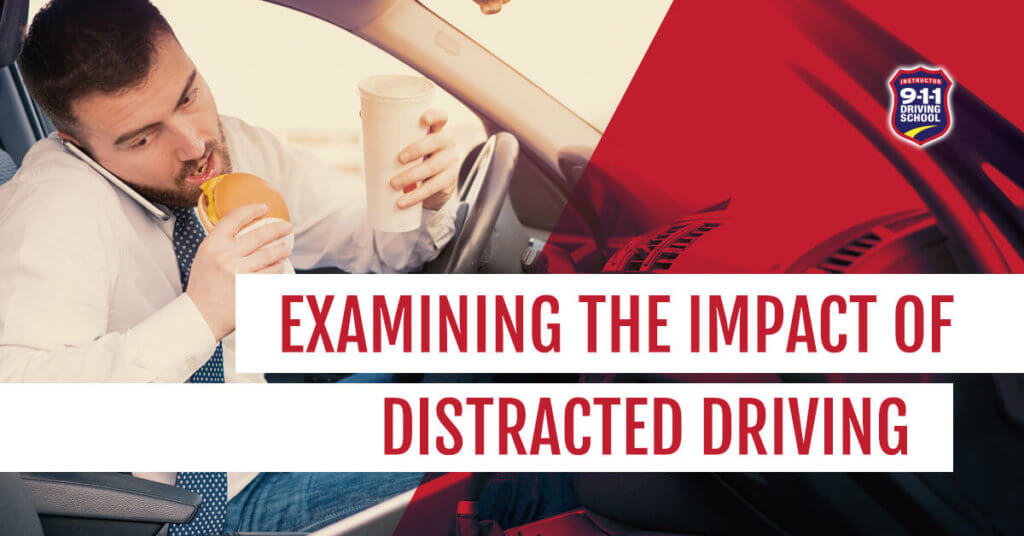One of the biggest threats on the road today is drivers being distracted. Thousands are injured every year, yet this is a problem that many drivers don’t take seriously enough. The official definition of distracted driving by the NHTSA is doing any kind of non-driving activity behind the wheel of a vehicle. While a cellphone gets the most attention for distracting drivers, there are many more culprits that take the attention of a driver.
The Categories of Distraction
There are three main categories that distractions fall into:
- Visual: it takes your eyes off the road
- Manual: it takes your hands off the wheel
- Cognitive: it takes your mind off driving
Some of the most common distractions include eating and drinking, fiddling with the dashboard, picking up dropped items, and engaging in conversation with passengers or on the cellphone. Many distractions fall into more than one category, increasing the danger to others on the road.
Statistics of Distracted Driving
Every driver is guilty of being distracted behind the wheel. Being mindful and attentive takes extra effort, but it is worth avoiding some of the terrible consequences that come from being distracted. Here are some statistics involving distracted driving.
The number one cause of car crashes is distracted driving. With more than 2.5 million people involved in a car crashes annually, some estimate that distracted driving is responsible for injuring up to 1,000 people each day.
Multitasking requires the brain to focus on one thing, switching between tasks quickly. The more you do while driving, the less you can focus on the road. If it is a cellphone you’re glancing at, even for a quick second or two, it takes up to 13 seconds to completely refocus on your surroundings. Eye activity also slows down during multi-tasking. During these times of focusing and refocusing, the brain isn’t fully focused on driving.
A vehicle traveling 30 miles per hour goes approximately 44 feet per second. Taking your eyes off the road for even 3 seconds means the car goes 132 feet without someone actively controlling it. There are countless problems that can happen during this time like a car braking up ahead, another driver pulling into traffic ahead of you, a changing light or missed stop sign, or even a child running into the road. One study found almost 80 percent of crashes involved a driver not paying attention for the three seconds leading up to the collision.
Taking the same routes or driving in familiar surroundings cause a driver to feel comfortable and pay less attention to the road. Approximately 77 percent of car crashes occur less than 15 miles of a destination. Driving in auto-pilot mode is dangerous for any driver, so never let your guard down.
Consequences of Distracted Driving
Depending on the state you reside in, there are varying consequences for driving distracted. To help emphasize the need for paying attention while driving, here are some steps states have taken to legislate change.
- Almost every state has laws against texting and driving.
- Some states have outlawed in-hand devices while others are working toward similar legislation.
- Police officers are watching more vigilantly for drivers not paying attention to the road. They even have devices to see when a cellphone was last used to bust drivers using their phones.
- Many states enforce some sort of graduated licensing laws that limit passengers in the car for new drivers.
Each of these laws come with varying fees and consequences. Insurance companies are also paying attention. If a driver is ticketed with one of these offenses, they can enforce their own consequences, including raising rates or not renewing a policy.
To keep everyone on the road around you safe, it is important to always pay attention while driving. This helps protect yourself, the other drivers, and any pedestrians in the area. Driver safety is an important part of drivers education and should be a focus for every veteran driver too.






